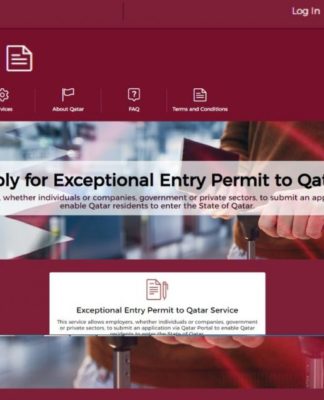Guidance for Air Travel through the COVID-19 Public Health Crisis
The CART Take-off guidance includes a section on Public Health Risk Mitigation Measures, in addition to four operational modules relating to:
It also includes recommendations for countries to evaluate passenger medical testing solutions using the new ICAO Manual on Testing and Cross-border Risk Management Measures.
Background
The impact of the coronavirus disease (COVID-19) pandemic on global air transport is without precedent. Airports have seen a 28.4 per cent decline in global passenger traffic volumes for the first quarter of 2020, equivalent to a reduction of 612 million passengers in absolute terms. For airlines, the revenue passenger kilometres flown (RPKs) worldwide were down by 94% on the previous year. International RPKs were down 98%, as the passenger side of the industry was virtually grounded. With second waves of the virus impacting various countries and leading to renewed travel restrictions, international air travel remains minimal at -88% down on last year in August. These volumes (domestic and international traffic) are expected to decrease by 50.4 per cent for 2020 as a whole as compared to 2019 figures. ICAO estimates that, by the end of 2020, the COVID-19 impact on scheduled international passenger traffic could reach reductions of up to 71 per cent of seat capacity and up to 1.5 billion passengers globally. Airlines and airports face a potential loss of revenue of up to 314 billion USD and 100 billion USD, respectively, for 2020.
Overview
This document provides a framework for addressing the impact of the current COVID-19 pandemic on the global aviation transportation system. The appendix to this document includes mitigation measures needed to reduce public health risk to air passengers and aviation workers while strengthening confidence among the travelling public, aviation workers, the global supply chain and governments. This will assist in accelerating demand for essential and non-essential air travel impacted by COVID-19. Complementing this material, this document also points to guidance material developed by international industry organizations which aims to assist in mitigating the impact of COVID-19.
With help and guidance from the civil aviation stakeholder community, ICAO recommends a phased approach to enable the safe return to high-volume domestic and international air travel for passengers and cargo. The approach introduces a core set of measures to form a baseline aviation health safety protocol to protect air passengers and aviation workers from COVID-19. These measures will enable the growth of global aviation as it recovers from the current pandemic. It is, however, important to recognize that each stage of that recovery will need a recalibration of these measures in support of the common objectives, which are to safely enable air travel, incorporate new public health measures into the aviation system, as well as support economic recovery and growth. Our work must recognize the need to reduce public health risk while being sensitive to what is operationally feasible for airlines, airports and other aviation interests. This is essential to facilitate the recovery during each of the forthcoming stages.
Objectives
In the aftermath of the COVID-19 outbreak, States, including government regulators, airports, airlines and aircraft manufacturers among other stakeholders of the aviation ecosystem, developed, in coordination with public health authorities, a set of measures aimed at reducing health risks to air travellers, aviation workers and the general public. These measures, applicable to States, airport operators, airlines and others in the air transport industry, are designed to enable a consistent and predictable travel experience. They will also contribute to the efficient, safe, secure and sustainable transport by air of an increasing number of passengers and cargo, and will minimize the risk of COVID-19 transmission between and among these groups and the general public. The implementation of these measures will facilitate and strengthen the global recovery from the COVID-19 pandemic.
These measures, applicable to States, airport operators, airlines, and others in the air transport industry, are designed to enable a consistent and predictable travel experience. They will also contribute to the efficient, safe, secure, and sustainable transport by air of an increasing number of passengers and cargo and will minimise the risk of COVID-19 transmission between and among these groups and the general public. The implementation of these measures will facilitate and strengthen the global recovery from the COVID-19 pandemic.
Guiding considerations
In developing the measures contained in the appendix, the drafters were guided by the following considerations:
- Remain Focused on Fundamentals: Safety, Security, and Efficiency
- Promote Public Health and Confidence among Passengers, Aviation Workers, and the General Public
- Recognize Aviation as a Driver of Economic Recovery
Based on these guiding considerations, the drafters further agreed that these measures
should be:
- implemented in a multi-layer approach commensurate to the risk level and shall not compromise aviation safety and security;
- able to capitalize on the sector’s longstanding experience and apply the same principles used for safety and security risk management. This includes monitoring compliance, reviewing the effectiveness of measures at regular intervals, and adapting measures to changing needs as well as improved methods and technologies;
- able to minimize negative operational and efficiency impacts while strengthening and promoting public confidence and aviation public health;
- consistent and harmonized to the greatest extent appropriate, yet flexible enough to respond to regional or situational risk-assessment and risk-tolerance. The acceptance of equivalent measures based on shared principles and internationally recognized criteria will be a fundamental enabler to restore air services on a global level;
- supported by medical evidence and consistent with health best practices;
- non-discriminatory, evidence-based, and transparent;
- cost effective, proportionate and not undermining to the equal opportunity to compete;
- highly visible, and communicated effectively and clearly to the aviation community as well as the general public; and
- consistent with international requirements, standards, and recommended practices applicable to aviation and public health.
Risk-based stages for mitigation measures
Resumption of higher volumes of passenger air travel will be dependent on a number of factors, including foremost public health agency guidelines (driven by travel risk levels), governmental travel restrictions and requirements, passenger confidence, and air carrier and airport operational capacity.
A risk-based approach will enable the transition between stages of restarting operations and the adjustment of mitigation measures based on risk, while recognizing that reverting to previous stages may be necessary. The goal is to maximize consistency and develop criteria for data reporting and the monitoring processes in support of evaluation and progression to the next stage(s). It is currently not feasible to provide any specificity of timing between these stages. At the time this document was published, most of commercial passenger aviation was in Stage 0 or 1.
Stage 0:
A situation with travel restrictions and only minimal movement of passengers between major domestic and international airports.
Stage 1:
Initial increase of passenger travel. This initial stage will coincide with relatively low passenger volumes, allowing airlines and airports to introduce aviation public health practices appropriate to the volume. There will be significant challenges as each stakeholder community adapts to both increased demand and the new operational challenges associated with risk mitigation. Health measures for travel required at airports will need to, at a minimum match those from other local modes of transport and infrastructure.
Stage 2:
As health authorities review the applicability of measures based on recognized medical criteria, passenger volumes will continue to increase. Several measures that were required in Stages 0 and 1 may be lifted. Health measures for travel required at airports will need to match those from other local modes of transport and infrastructure.
Stage 3:
This stage may occur when the virus outbreak has been sufficiently contained in a critical mass of major destinations worldwide as determined by health authorities. The reduction of national health alert levels and associated loosening of travel restrictions will be key triggers. Risk mitigation measures will continue to be reduced, modified, or will be stopped in this stage. There may not be effective pharmaceutical interventions (e.g. therapies or vaccines) commonly available during Stage 3, but contact tracing and testing should be readily available. Until specific and effective pharmaceutical interventions are available, States may need to continue to loosen or reinstate public health and social measures throughout the pandemic.
Stage 4:
This stage begins when specific and effective pharmaceutical interventions are readily available in most countries. There may be a set of residual measures/mitigations that could be retained, although these should also undergo a periodic review process.
Note: There are no hard boundaries in these stages and the transition between them can be in either direction.
























